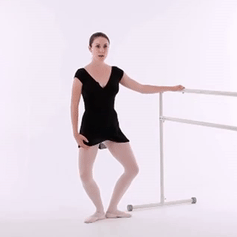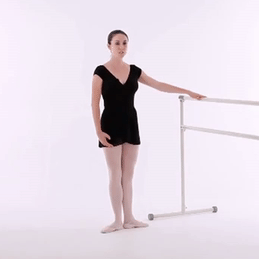Relevé/Élevé
pronunciation: re-leh-vay / el-eh-vay
translation: "raised" or "lifted"
As a movement:
Lifting the heels and rising on to the toes. Whether the the rise is "relevé" or "élevé"* depends on the starting position.
Relevé: starts from a plié
Élevé: starts from straight legs.
As a position:
"Relevé" can also describe a position of the standing leg. In a relevé position, the heel is lifted and you are on your toes. Describing a position as relevé disregards whether you got there from straight leg or a plié.
*Not all schools/methods of ballet use the term "élevé." "Relevé" is often used to refer to both relevé and élevé movements. I prefer to use "élevé" in order to distinguish between rising from plié and rising from straight legs because there is a significant difference in mechanics between the two.

Relevé

Élevé

Relevé position: "passé relevé"


